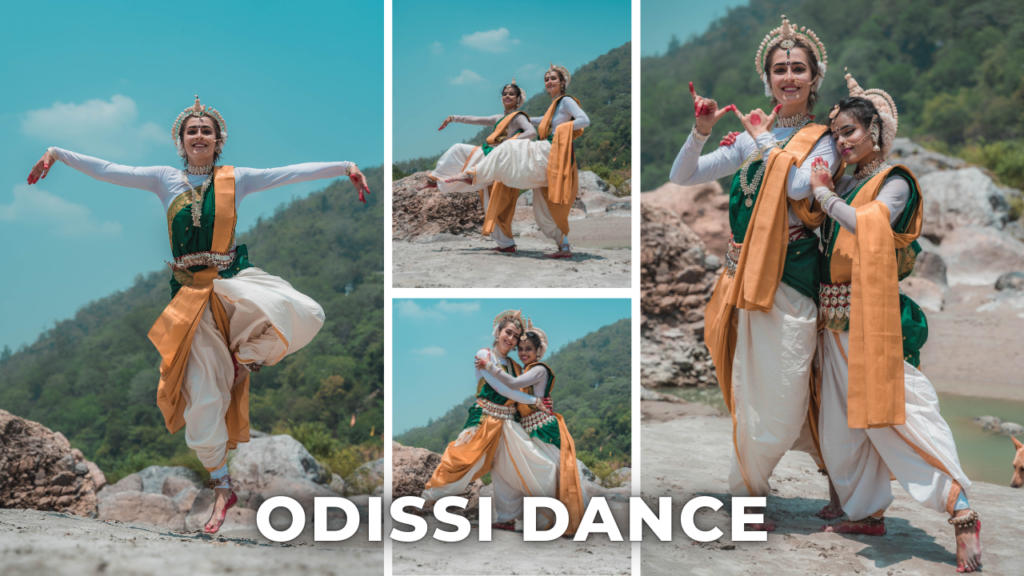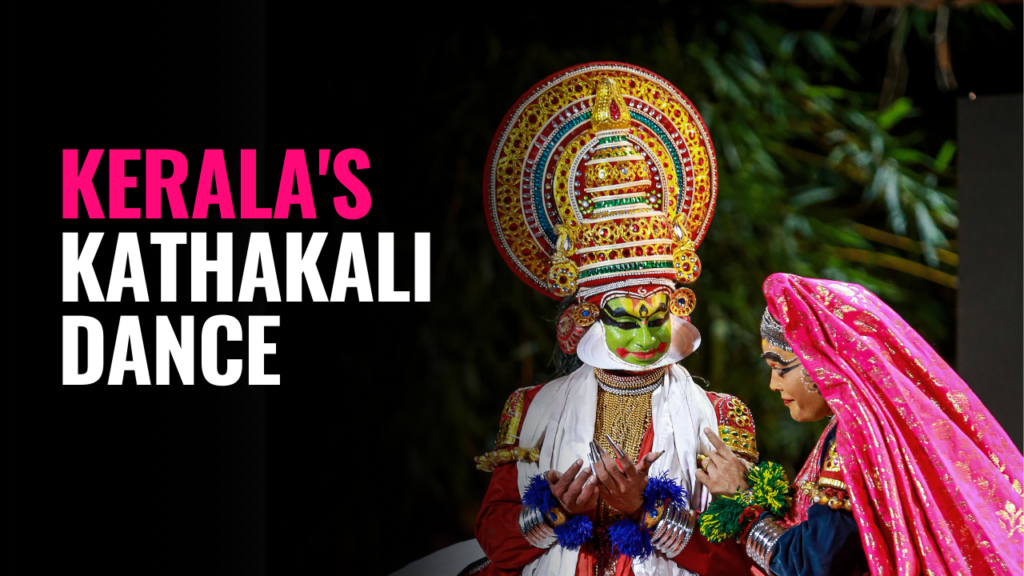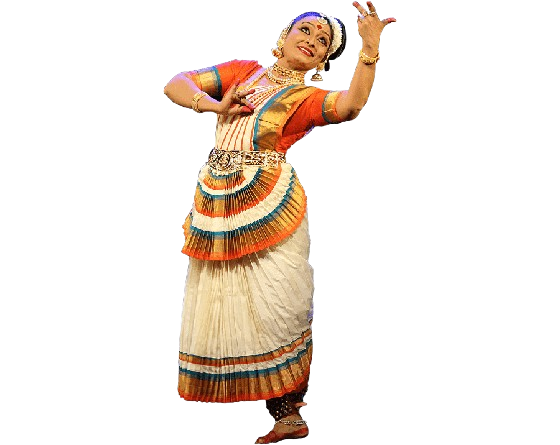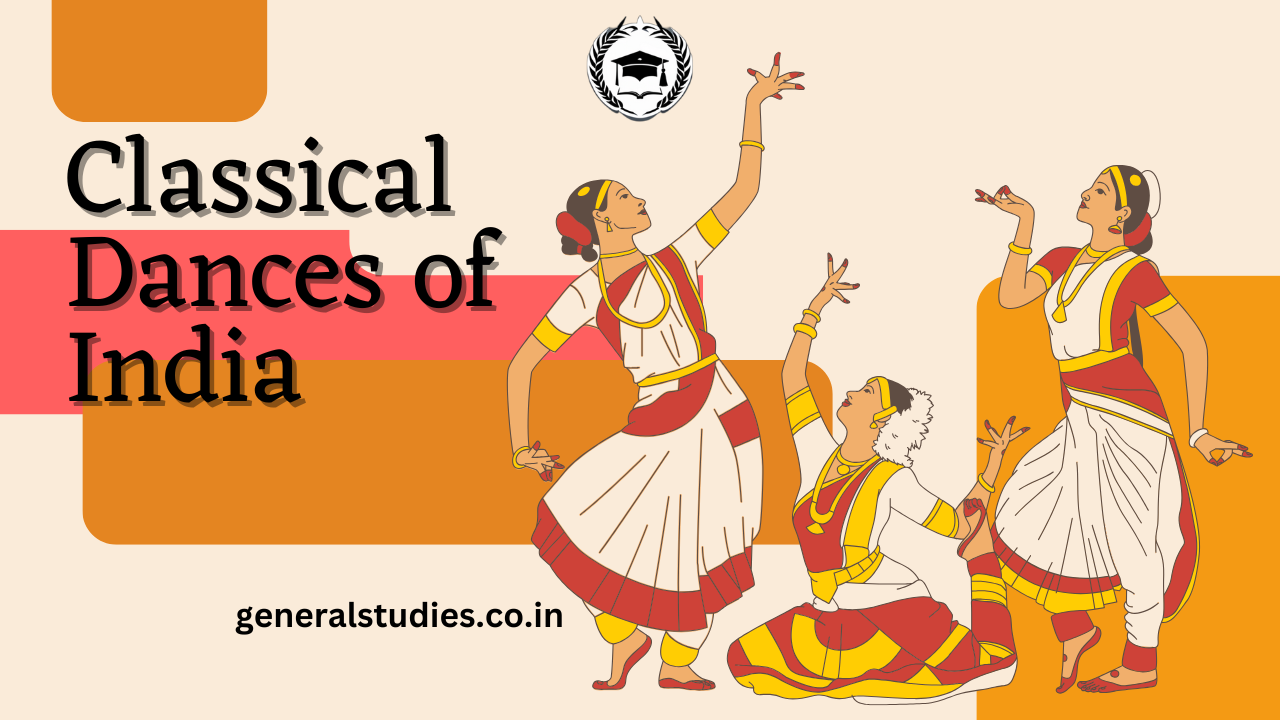Table of Contents
Introduction: Classical Dances of India
India is home to a variety of classical dance forms, each with its own unique style, history, and cultural significance. These dances have been passed down through generations and often embody themes from ancient epics, mythology, and spirituality. Here’s an educational overview of India’s classical dance forms, covering their origins, key elements, and characteristics.
1. Bharatanatyam (Tamil Nadu)

Bharatanatyam, one of India’s oldest and most renowned classical dance forms, originated in Tamil Nadu in southern India. This traditional art form has deep roots in spirituality, mythology, and classical aesthetics. Over centuries, Bharatanatyam has evolved from temple performances to theatrical stages around the world.
Origins and History
- Temple Roots: Bharatanatyam began as a temple dance by devadasis (temple dancers) who dedicated their lives to the worship of gods and goddesses.
- Names and Evolution: Earlier known as Sadir or Dasi Attam, it was later formalized as Bharatanatyam.
- Revival and Global Reach: It was the first Indian dance form to be restructured for stage performances, gaining recognition both in India and internationally.
Foundation and Structure
- Based on Ancient Texts: Bharatanatyam follows principles outlined in Bharata’s Natyashastra, one of India’s oldest texts on dance and performing arts.
- Tanjore Quartet Influence: The present-day form and structure were largely established by the Tanjore Quartet in the 19th century (the brothers Ponniah, Chinnaiah, Sivanandam, and Vadivelu).
- Language of Dance:
- Nritta: Pure, rhythmic dance movements without storytelling elements.
- Nritya: Expressive dance that conveys a narrative, involving storytelling and emotions.
Themes and Aesthetics
- Spiritual Themes: Bharatanatyam often portrays themes of Bhakti (devotion) and Shringara (romantic love).
- Stories and Myths: The dance brings to life various stories from Hindu mythology, celebrating the lives and virtues of deities such as Shiva, Krishna, and Devi (goddess).
- Aesthetic Elements: The performances emphasize balance, symmetry, and beauty, creating a harmonious blend of movement, music, and emotion.
Musical Accompaniment
- Carnatic Music: Bharatanatyam is accompanied by Carnatic music, the classical music tradition of South India.
- Instrumental Ensemble:
- Vocalist: Sings the compositions, often in Tamil, Telugu, or Sanskrit, adding emotion and narrative depth.
- Mridangam: A two-headed drum providing rhythm.
- Flute, Veena, or Violin: Melodic instruments that enrich the musical atmosphere.
- Nattuvanar: The dance conductor who plays small bronze cymbals and recites dance syllables to guide the dancer’s rhythm and steps.
Costumes and Make-up
- Traditional Attire: Dancers wear brightly coloured silk sarees with a special pleated fan-like design at the front, which emphasizes leg movements.
- Jewellery: Heavy traditional jewellery adorns the head, neck, arms, and waist.
- Make-up: The eyes are accentuated with kohl to enhance facial expressions, and red and white designs are applied to the feet and hands for visual impact.
Structure of a Bharatanatyam Performance
- Alarippu: An introductory piece to warm up the dancer and invoke blessings.
- Jatiswaram: A pure dance sequence focusing on intricate footwork and rhythms.
- Varnam: The central and most elaborate piece, combining expressive dance with rhythm to convey a narrative.
- Padams and Javalis: Short, expressive pieces often portraying love or devotion.
- Tillana: A fast-paced, concluding piece that showcases the dancer’s skill and energy.
- Mangalam: A short prayer to conclude the performance and seek blessings.
Unique Features of Bharatanatyam
- Mudras: Bharatanatyam uses a rich vocabulary of mudras (hand gestures) to symbolize various objects, emotions, and actions.
- Expressions (Abhinaya): Facial expressions and body language are central, allowing dancers to convey complex emotions.
- Rhythmic Precision: Dancers maintain exacting rhythms with footwork and ankle bells, creating a striking visual and auditory experience.
- Devotional Focus: Rooted in spirituality, Bharatanatyam continues to be a medium for expressing divine stories and emotions, linking the performer with the audience in a shared devotional experience.
Notable Bharatanatyam Artists
- Rukmini Devi Arundale: Credited with popularizing Bharatanatyam as a respectable stage art in modern India.
- Balasaraswati: Known for her deeply expressive performances and mastery over abhinaya (expressive storytelling).
- Padma Subrahmanyam: A pioneering dancer and scholar who explored and contributed to Bharatanatyam’s ancient roots.
2. Kathak (North India)
Kathak is one of the prominent classical dance forms of India, known for its expressive storytelling, intricate footwork, and rhythmic patterns. Originating in northern India, Kathak has evolved over centuries, blending elements from different cultures and traditions, making it a rich and diverse dance form.
Origins and Evolution
- Historical Roots: Kathak is thought to be linked to the Kathakaras or storytellers, who narrated epics like the Ramayana and Mahabharata and other ancient scriptures. Through expressive gestures, they conveyed stories to lay audiences.
- Courtly Influence: Kathak underwent a significant transformation in the medieval period, particularly under Mughal patronage, where it was adapted for the royal court and enriched with Persian and Islamic cultural elements.
- Centres of Kathak: By the 19th century, Lucknow, Jaipur, and Raigarh became major hubs, each developing its own distinctive style within the Kathak tradition.
- Modern Revival: In the 20th century, Kathak began to receive public support, and large group choreographies became more common, enriching the dance with contemporary adaptations.
Key Characteristics of Kathak
- Footwork (Tatkar): Known for its precise and rapid footwork, Kathak dancers perform intricate rhythms, emphasizing timing and agility.
- Pirouettes (Chakkars): Kathak dancers execute multiple spins or pirouettes, adding to the dynamic visual impact of the performance.
- Expressive Storytelling: Kathak incorporates both abstract (Nritta) and expressive (Nritya) dance, narrating stories through movements, facial expressions, and gestures.
Structure of a Kathak Performance
A Kathak recital is structured with specific sequences:
- Amad: The opening sequence, introduces the rhythmic style.
- Thaat: A slow, graceful section setting the tone for the performance.
- Gat Nikas: Movements depicting characters or stories, allowing the dancer to explore narrative expression.
- Paran: A rhythmic piece, often performed in sync with tabla beats.
- Tatkar: Rhythmic footwork, one of Kathak’s defining features.
Music and Instruments
- Thumri: Kathak performances often include Thumri, a style of Hindustani music associated with romantic and expressive lyrics, especially favoured in the Lucknow court of Wajid Ali Shah. Thumri enhances the emotional depth of Kathak.
- Musical Instruments: Kathak is accompanied by Tabla (a pair of drums), Pakhawaj (a two-headed drum), and Sarangi (a bowed string instrument). The Sitar and other plucked instruments are also used to add melodic texture.
Unique Aspects of Kathak
- A blend of Cultures: Kathak’s evolution under both Hindu and Islamic influence makes it a unique blend of spirituality, storytelling, and royal elegance.
- Versatile Themes: While rooted in Krishna lore and devotional themes, modern Kathak explores a variety of themes and stories, broadening its appeal.
- Dynamic Rhythm-Play: Kathak is known for its intricate rhythmic patterns and the dancer’s ability to play with tempo and beats, making it a dance of rhythm and precision.
3. Odissi (Odisha)

Odissi is one of India’s most graceful classical dances, originating from Odisha in eastern India. Its roots lie in temple traditions where it was performed by maharis (female temple dancers) as a ritual offering to the deities. Over time, Odissi has evolved into a sophisticated and expressive performance art.
Origins and Evolution
- Temple Tradition: Originally performed by maharis as part of temple worship, particularly in Jagannath temples in Odisha.
- Remodelling as Theatre Art: In the mid-20th century, Odissi was reshaped into a performance art form, using ancient sculptures, paintings, and literary references from Odisha’s cultural heritage.
Spiritual Foundation
- Vaishnavism Influence: Odissi is deeply influenced by Vaishnavism, the worship of Vishnu. Stories of Krishna and Radha form the central themes of its performances.
- Poetic Inspiration:
- The lyrics of Jayadeva’s Gitagovindam (12th-century work) hold an esteemed place in Odissi dance.
- Songs in Oriya by poets like Upendra Bhanja and Banamali Das are also part of the Odissi repertoire.
Style and Technique
- Graceful and Sculpturesque Movements: Odissi movements are inspired by ancient temple sculptures and are often described as sculpturesque.
- Characteristic Poses:
- Tribhangi: A graceful, three-bend posture that gives Odissi its distinct serpentine quality.
- Chowk: A firm, square stance that represents stability and strength.
- Elements of Technique:
- Hastas: Codified hand gestures used to convey stories and emotions.
- Pada Bheda: A structured approach to footwork.
- Chalis: Gaits and walks that are unique to Odissi.
- Bhramaris: Spins and circular movements.
Musical Accompaniment
- Traditional Instruments: Odissi is accompanied by the Pakhawaj (a two-headed drum), flute, and sitar, creating a distinct rhythmic and melodic environment.
- Role of Dance Conductor: A conductor, or nattuvanar, coordinates the performance, keeping time with cymbals and chanting rhythmic syllables.
Key Features of Odissi Dance
- Flowing Movements: Odissi is known for its soft, fluid motions, creating a harmonious blend of grace and poise.
- Narrative Dance: Odissi uses expressive storytelling through body language, hand gestures, and facial expressions.
- Classical Heritage: By drawing on ancient traditions, sculptures, and texts, Odissi maintains a deep connection with Odisha’s cultural and spiritual heritage.
4. Kathakali (Kerala)

Kathakali, meaning “story play,” is one of India’s classical dance forms, originating in Kerala in the 17th century. It is renowned for its vibrant make-up, elaborate costumes, and detailed storytelling through expression and gesture. Here is an in-depth look at Kathakali:
Origins and Development
- Historical Roots: Developed in Kerala in the 1600s under the patronage of a local prince who wrote Malayalam-language plays based on epic stories from the Ramayana.
- Epic Inspirations: Stories in Kathakali mainly come from the Ramayana and Mahabharata, as well as other Puranic tales.
Unique Characterization
- Symbolic Makeup and Costume: Kathakali categorizes characters with unique make-up and costumes to symbolize their personalities.
- Green Face Paint: Used for heroes, kings, and divine characters.
- Red and Black: Represents villains or fierce characters.
- Costume Features: The main costume element is the large, billowing skirt for male characters, along with elaborate headdresses.
The Performance
- Speechless Acting: Kathakali is performed without spoken dialogue.
- Singers: Two singers on stage sing the dialogue, keeping rhythm with gong and cymbals.
- Drummers: Two drummers accompany the performance on the Chenda drum.
- Expressive Gestures: The story is conveyed through detailed facial expressions and hand gestures.
Traditional Structure
- Evening to Daybreak Performances: Traditional Kathakali performances are long and often begin in the evening with invocatory drumming on the Maddalam.
- Modern Adaptations: Today, shorter scenes from different plays are commonly performed instead of a single all-night play.
Key Elements of Kathakali
- Mudras: Hand gestures used to communicate emotions and actions.
- Expressions: Actors undergo rigorous training to control every muscle in their faces, enhancing their ability to portray various emotions.
- Vibrant Aesthetics: Costumes and make-up are elaborate, making Kathakali one of the most visually distinctive classical dances of India.
5. Kuchipudi (Andhra Pradesh)
Kuchipudi, a major classical dance form of India, originated from Andhra Pradesh and developed as a result of the Bhakti movement starting in the 7th century AD. It blends dance, drama, and music into a comprehensive art form that captures both the devotion and grace of Indian classical performance.
Origins and History
- Place of Origin: Kuchipudi derives its name from Kuchelapuram, a village in Andhra Pradesh where the art form was refined and nurtured by scholars and artists.
- Influence of the Bhakti Movement: The dance form grew under the influence of the Bhakti (devotional) movement, expressing themes of devotion to deities and episodes from Hindu mythology.
Structure and Components
Kuchipudi consists of three main elements: Nritta (pure dance), Nritya (expressive dance), and Natya (dramatic dance).
- Nritta:
- Focuses on rhythmic movements that are decorative but have no symbolic meaning.
- Teermanams and Jatis are intricate patterns of movement that fall under Nritta.
- Nritya:
- Encompasses Sabdams, which involve expressive gestures and storytelling.
- Combines Abhinaya (expressive gestures and mime) with the rhythmic dance.
- Natya:
- This part emphasizes drama and acting using Mudras (hand gestures) and facial expressions to convey the story’s emotions.
Performance Style and Unique Features
- Dance-Drama Tradition: Historically, Kuchipudi was performed as a dance-drama with multiple dancers playing different roles. Today, it can also be performed as solo, duet, or group presentations.
- Expression of Multiplicity: The dancer portrays multiple characters on stage by swiftly changing expressions and gestures, relying on both naturalistic acting and symbolic gestures.
- Dynamic Movements: Emphasis is placed on fluid transitions and dramatic expression, showcasing intense feelings and devotion.
Music and Accompaniment
- Carnatic Music: The dance is set to Carnatic music, the classical music of southern India.
- Instruments: Traditional instruments like the Mridangam (drum), Veena (string instrument), flute, and violin typically accompany the performance.
Themes and Stories
- Mythological Narratives: Kuchipudi often narrates episodes from Hindu epics like the Ramayana and Mahabharata.
- Devotional Themes: Stories focusing on the lives of Hindu deities, especially Krishna and Shiva, are common.
6. Manipuri (Manipur)
Manipuri dance is a graceful classical dance form that originated in Manipur, a northeastern state of India. It is distinct for its gentle movements, spiritual themes, and unique style that contrasts with other Indian classical dance forms. This dance form is primarily performed in temples and other sacred spaces, reflecting its deep-rooted connection to the Vaishnava faith.
Origins and Influences
- Cultural Roots: Manipuri dance developed among the Meiteis (people of the Manipur valley) and is deeply influenced by the Vaishnava tradition, focusing on devotion to Lord Krishna and Radha.
- Temple Performances: Even today, temples in Manipur are primary venues for performances, maintaining the dance’s sacred essence.
- Themes: The dance is predominantly devotional, often drawing on stories from the life of Krishna and episodes of Radha-Krishna love lore.
Characteristics of Manipuri Dance
- Introverted Style: Manipuri dance is unique in its restraint and inward focus. The dancers do not make eye contact with the audience, emphasizing a more meditative and internalized expression.
- Circular Movements: Movements are soft, circular, and continuous, merging seamlessly to create an unbroken flow.
- Subtle Expressions: Facial expressions are gentle and never exaggerated, in contrast to the dramatic expressions seen in some other Indian classical dances.
- Mudras: Hand gestures, or mudras, are used minimally and subtly, blending into the flow of the dance.
Key Forms Within Manipuri Dance
- Jagoi: A gentle and graceful dance, embodying the Lasya (feminine and soft) element. This style is often seen in Ras Leela performances, which depict the divine love story of Radha and Krishna.
- Cholom: A more vigorous style of dance that represents the Tandava (masculine and strong) element. Despite its energy, Cholom maintains the restraint and elegance typical of Manipuri dance.
- Ras Leela: A signature form of Manipuri dance, Ras Leela focuses on devotion to Krishna and celebrates episodes from his life, especially his interactions with Radha and the gopis (milkmaids).
Technique and Movement
- Posture and Footwork: The dancer’s legs are bent with knees close together, allowing soft, light steps that give a floating effect. Unlike other Indian dances, Manipuri dancers avoid audible footwork, keeping their movements soft and silent.
- Flowing Movements: Each movement flows naturally into the next, creating a harmonious, circular rhythm.
Music and Instruments
- Pung: The Pung, a traditional Manipuri drum, plays a vital role in setting the rhythm and energy for the dance. Pung Cholom, a dance performed with the drum, showcases both musical and physical skills.
- Flute: The flute is another primary instrument, adding a soothing, melodious quality that enhances the devotional atmosphere of the performance.
Unique Features
- Introverted Approach: Dancers focus on the internal experience, often meditating through their movements.
- Symbolism and Spirituality: Every gesture and movement has a spiritual symbolism, aiming to create a sense of devotion and divine connection.
- Silent Footwork: Unlike many Indian dance forms, Manipuri dance has silent footwork, emphasizing the smooth, floating quality of movement.
7. Mohiniyattam (Kerala)
Mohiniattam, meaning “dance of the enchantress,” is a classical dance form originating from Kerala. Known for its grace and femininity, Mohiniattam combines delicate movements with gentle rhythms, making it one of India’s unique dance traditions. Below is a detailed look at Mohiniattam’s origins, characteristics, and performance elements.
Origins and Development
- Mythological Inspiration: The name “Mohiniattam” is derived from Mohini, the mythological enchantress, symbolizing feminine grace and beauty.
- Temple Tradition: The dance evolved from temple performances in Kerala, rooted in devotion and spirituality.
- Royal Patronage: Swati Tirunal, the 19th-century prince of Travancore, greatly contributed to the development of Mohiniattam. He composed a vast repertoire of songs specifically for the dance, which are still used today.
Key Features and Style
- Gentle and Feminine: Mohiniattam is characterized by soft, flowing movements and gentle footwork. There is no heavy or forceful stepping, and movements are primarily focused on the torso.
- Graceful Flow: The dancer’s body rises and falls with a natural grace, embodying a sense of lightness and restraint.
- Restrained Movements: Unlike many other classical forms, Mohiniattam’s movements are subtle and refined, creating an enchanting visual aesthetic.
Musical Accompaniment and Instruments
- Unique Rhythms: Mohiniattam uses Kerala-specific rhythms, particularly those associated with traditional drums.
- Primary Percussion: The Maddalam and Edakka drums provide the rhythm, especially with syllables that complement the feminine essence of the dance.
- Melodic Instruments: Mohiniattam’s music ensemble includes:
- Mridangam (drum)
- Veena (string instrument)
- Flute
- Kuzhitalam or Cymbals
Movement and Expression
- Torso Movements: Emphasis is placed on the torso, which moves fluidly to convey grace and femininity.
- Melody and Motion Harmony: The oscillations of the music match the dancer’s movements, creating a seamless blend of rhythm and motion.
- Emotional Nuance: Expressions are gentle, with a focus on subtlety rather than dramatic display.
8. Sattriya (Assam)
Sattriya dance, a classical Indian dance form, originated in the Sattras (monasteries) of Assam in the 16th century. Founded as a medium to spread Vaishnava philosophy by the saint and reformer Shankaradeva (1449-1586), it centres around devotion to Lord Krishna. Over time, Sattriya has evolved from a monastic tradition into a prominent classical dance, performed both in traditional monasteries and on modern stages.
Origins and Historical Background
- Rooted in Vaishnavism: Originating from the Vaishnava movement, Sattriya was created by Shankaradeva to promote devotion to Krishna and other aspects of Vaishnavism.
- Institutional Beginnings: Initially performed by monks in Sattras, Sattriya maintained a religious and monastic character for centuries before it moved into the public domain in the late 20th century.
Key Features of Sattriya Dance
Sattriya dance incorporates Nritta (pure dance) and Abhinaya (expressive dance), and is known for its elegance and spiritual depth.
- Hand Gestures and Expressions:
- Hasta (Hand Gestures) and Pada Karma (Footwork) form the technical foundation.
- Dancers convey emotions and narratives through detailed facial expressions and graceful movements.
- Distinctive Movements and Structure:
- Nritta (pure dance) includes rhythmic footwork and dynamic movements.
- Abhinaya (expression) is used for storytelling, portraying characters from Hindu epics.
Structure of a Sattriya Performance
A traditional Sattriya performance may include a variety of sections, each with distinct purposes and characteristics:
- Invocation: The performance begins with a prayer or invocation to Krishna or Rama.
- Sutradhar Dance: The conductor (sutradhar) introduces the themes and mood.
- Ramdani, Chali, Mela Nach, and Jhumura: These dances are often purely rhythmic, showcasing intricate footwork and movements.
- Geetar Nach: This expressive dance focuses on storytelling through abhinaya, portraying scenes from Vaishnava texts.
Musical Accompaniment and Instruments
- Gayan Bayan: A traditional musical prelude performed by a group of musicians playing drums.
- Instruments: Accompanied by khol (drums), cymbals, and sometimes flutes and string instruments.
- Rhythmic and Melodic Complexity: The music is rich and varied, often enhancing the emotional depth of the performance.
Modern Adaptations and Innovations
- Stage Adaptations: Today, Sattriya is not only performed in Sattras but also on concert stages as solo, duet, or group performances.
- New Choreography: While respecting the traditional repertoire, new choreographies are created to enhance the dance’s appeal to contemporary audiences.
- Dance Dramas: Inspired by traditional Sattriya stories, modern dance dramas recreate narratives from the epics and Vaishnava lore.
Common Features of Indian Classical Dances
- Use of Mudras: Each dance form has a set of hand gestures (mudras) that symbolize different ideas, emotions, and objects.
- Expression and Emotion: Dancers use facial expressions and eye movements to convey emotions and tell stories.
- Rhythmic Footwork: Each form has unique footwork patterns and rhythmic variations, often accompanied by ankle bells (ghungroos).
- Spiritual and Cultural Significance: Many dances are rooted in devotion, telling stories of gods, goddesses, and spiritual values.
8 Classical Dances of India at a Glance
| Dance Form | State of Origin | Themes | Key Characteristics | Famous Artists |
|---|---|---|---|---|
| Bharatanatyam | Tamil Nadu | Hindu mythology, especially gods and goddesses | Fixed upper torso, intricate footwork, expressive gestures and facial expressions | Rukmini Devi Arundale, Padma Subrahmanyam |
| Kathak | North India | Hindu epics, Persian influences | Fast spins, intricate footwork, expressive storytelling, both Hindu and Mughal themes | Birju Maharaj, Sitara Devi |
| Odissi | Odisha | Lord Jagannath, Krishna-Radha tales | Graceful movements, “Tribhangi” posture, fluid hand gestures | Kelucharan Mohapatra, Sonal Mansingh |
| Kathakali | Kerala | Hindu epics, good vs. evil | Elaborate costumes, face makeup, exaggerated expressions, eye movements | Kalamandalam Gopi, Kottakkal Sivaraman |
| Kuchipudi | Andhra Pradesh | Hindu mythology, tales of Krishna | Rhythmic footwork, theatrical storytelling with speech and acting | Vempati Chinna Satyam, Raja-Radha Reddy |
| Manipuri | Manipur | Life of Krishna and Radha | Gentle, flowing movements, emphasis on devotion, Ras Lila | Guru Bipin Singh, Darshana Jhaveri |
| Mohiniyattam | Kerala | Tales of Vishnu as Mohini | Slow, swaying movements, feminine grace, subtle expressions | Kalamandalam Kalyanikutty Amma, Sunanda Nair |
| Sattriya | Assam | Devotion to Lord Krishna | Dance-drama style, rhythmic footwork, controlled expressions | Dr. Bhabananda Barbayan, Anita Sharma |
Conclusion
Indian classical dances are not only performances but a blend of art, culture, and spirituality. Each dance form is unique, offering insights into India’s rich heritage, values, and devotion. These art forms continue to thrive today, celebrated by artists and audiences worldwide, preserving the essence of Indian culture.

